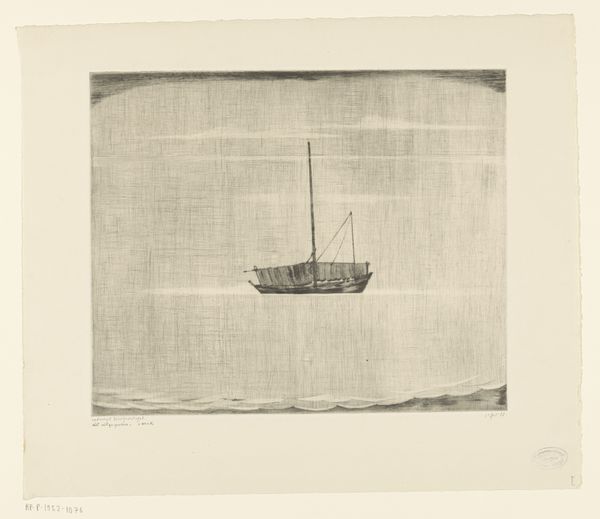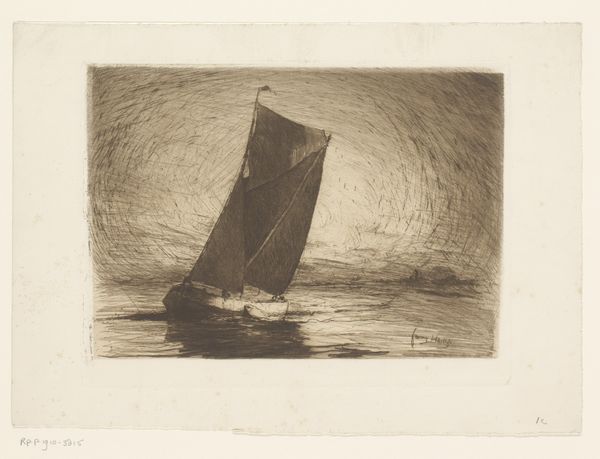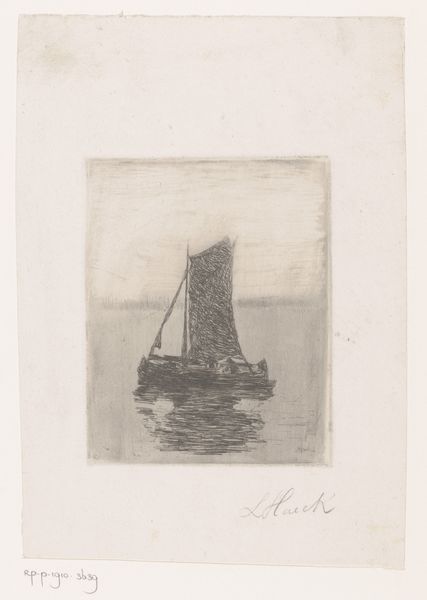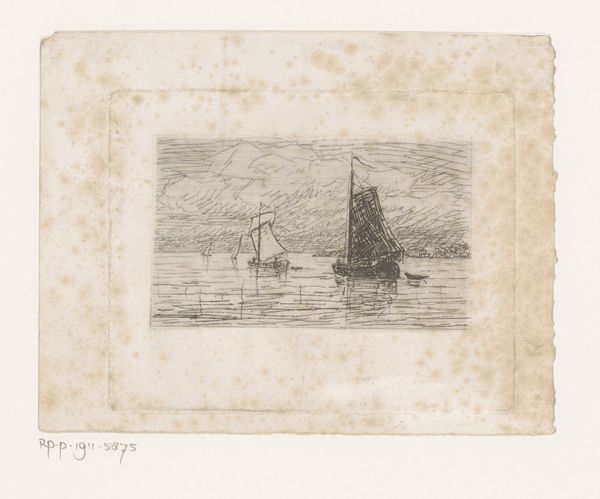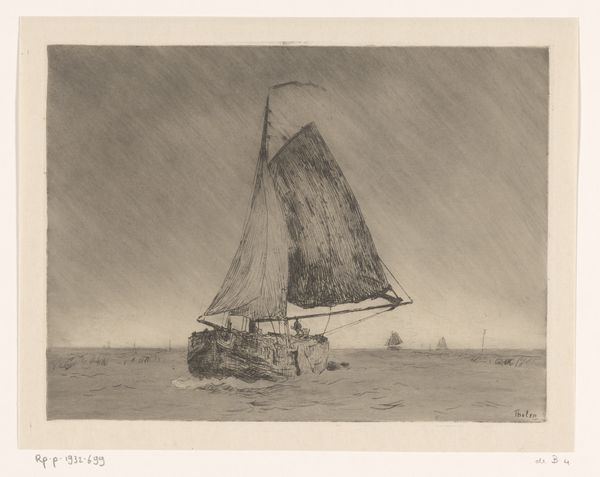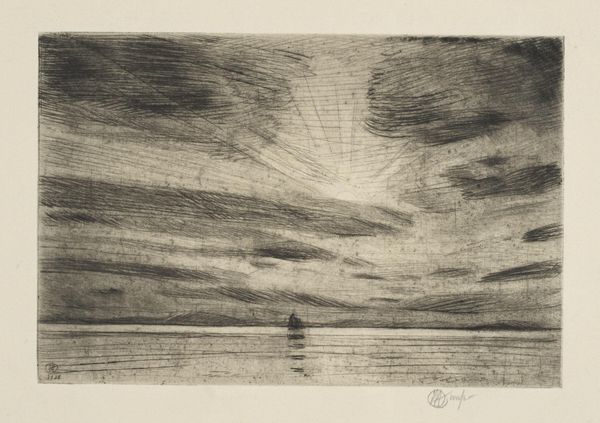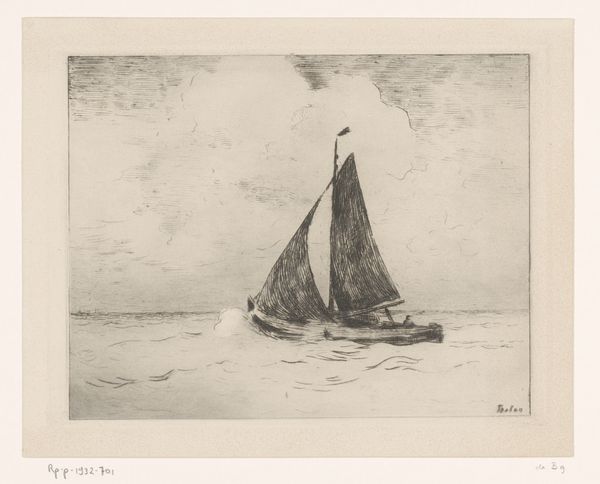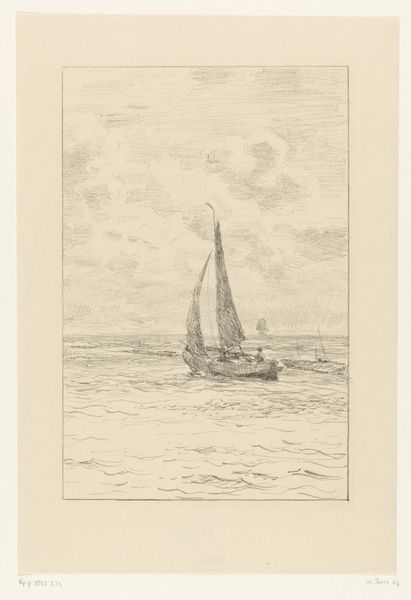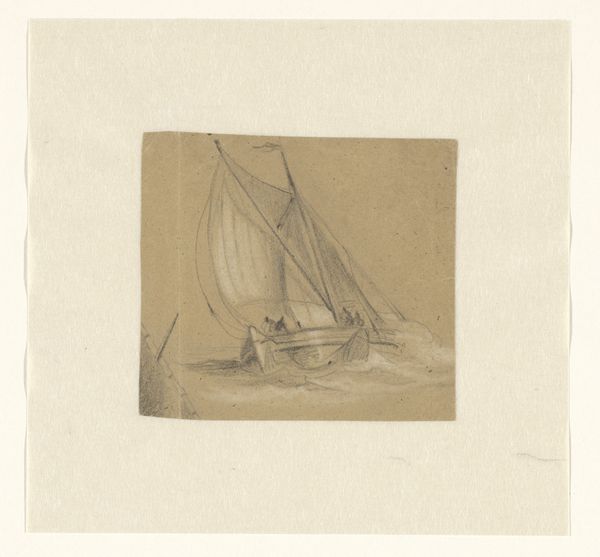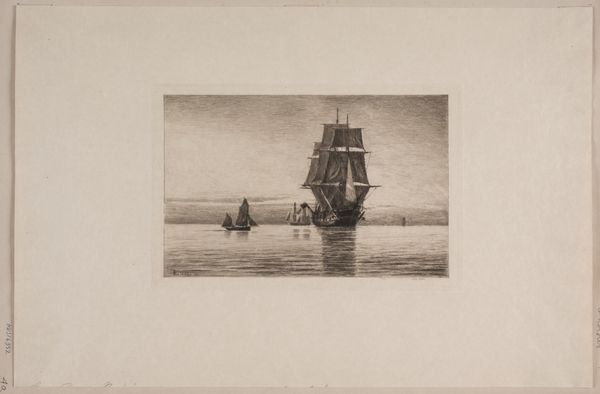
Copyright: Public domain
Curator: This Eugène Jansson ink drawing, titled "I Solstrimman," was created in 1900. What are your initial thoughts? Editor: Serene. The monochrome palette lends a tranquil air, and that strong vertical axis, where the sun catches the water, emphasizes depth while also bisecting the image into distinct areas. What story does it tell? Curator: Beyond its surface beauty, it encapsulates Jansson's ongoing exploration of light, particularly as a motif. Sunlight, radiating and powerful, symbolized for many fin-de-siècle artists a certain spiritual essence, often tied to the concept of awakening or transformation. Do you see a parallel there, between the symbolic potential of the light and the rise of the modern aesthetic in Scandinavia? Editor: Definitely. It's also crucial to view this through the lens of the burgeoning political landscapes. Consider Sweden at the turn of the century: Industrialization was ramping up, urban spaces expanding—there’s almost a silent resistance here, an almost melancholic longing for a simpler time reflected in the soft handling of the cityscape in the distance. Is there more significance to the ship here? Curator: Intriguingly, ships, for Jansson, carry strong symbolism, appearing often. A vessel cutting through water can symbolize a journey, but also vulnerability, particularly in contrast to an overwhelming natural force, such as here, the sea meeting a strong sunlight. Its smallness against the light makes one question, "is the human element here resilient, or destined to be consumed by it?". Editor: Right, like the individual against forces much larger than themselves: cultural shifts, industrial expansions. So the visual stillness is loaded with an understated, social anxiety and even resistance to the changes the country was going through, wouldn't you agree? Curator: It is also intriguing how he chooses to work primarily in monochrome to present a natural scene so bursting with luminosity; perhaps it is the reduction of sensory overload which makes the work that much more of an emotive imprint. Editor: Ultimately, Jansson masterfully utilizes light and shadow to render the nuances of not just a seascape, but an inner emotional landscape amidst a rapidly changing world. Curator: An introspective reflection, indeed, revealing how art captures not just a moment in time but an enduring aspect of the human condition.
Comments
No comments
Be the first to comment and join the conversation on the ultimate creative platform.
